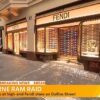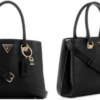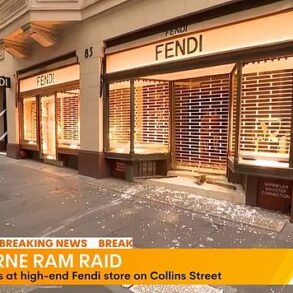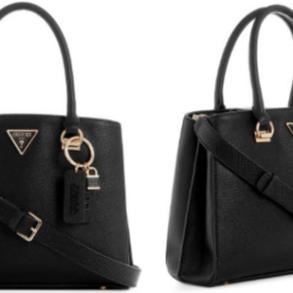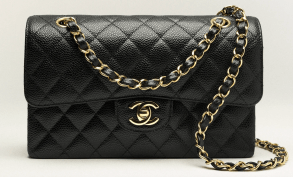In news that shocked fashionistas nationwide, luxury retailer Cosette has been allegedly exposed in a joint investigation by the Sydney Morning Herald and A Current Affair for selling fake designer handbags.
At least four customers claim they were duped after handing over thousands of dollars for Gucci and YSL bags that were rip offs.
The victims say they were drawn in by the retailer’s pricing, which is typically 20 to 30 per cent cheaper than what the same bags retail for at the designer’s actual boutiques.
One customer revealed she spent about $2,400 on a YSL bag only to have a third party authenticator tell her it was a knock off.
Cosette has denied the claims and insists the bags were authentic, but still refunded the women out of “good will”.
The company insist they are able to undercut the boutiques because they source the bags from reputable suppliers and third parties in Europe, where luxury bags retail for far cheaper than what customers usually pay locally.
Not surprisingly, few readers have been overly sympathetic to the customers who were allegedly scammed, with many wondering why anyone would spend thousands of dollars on a handbag in the first place.
In short, luxury bags speak to a deeper cultural need to acquire a brand worn by the rich and famous and hoping the glamour rubs off on you, the wearer.
The great irony is that many of the celebrities and influencers who flaunt these luxury goods probably did not pay at all.
Each season, brands send out hundreds of their latest “it bags” to influencers and celebrities for free.
Lesser celebs simply “borrow” the bags for events rather then return them.
Why bother paying for something you’ve already been photographed carrying?
Meanwhile, regular people line up (literally) to hand over money they do not have for the bag – somebody must pay eventually.
Sites like Cosette have boomed as handbag prices have risen exorbitantly in the past few years thanks to inflation, COVID and a desire by brands to “upscale” their clientele.
In some parts of the world, luxury handbags real and fake are a type of shorthand used to signify wealth and social status.
Lately, so-called “super fakes” have been flooding the secondary market, which is possibly what has happened in the case of Cosette.
Super fakes are produced in sophisticated factories in China and use real leathers and high-quality hardware that is nearly indistinguishable from the real deal.
While luxury houses seldom speak openly about counterfeiting, supposedly even the most prestigious brands are being duped by criminals trafficking in super fakes.
The scam is extremely simple: a criminal goes into a high-end store, buys a real bag, then returns a high-quality replica of the bag and pockets the cash.
The sheer size and volume of the current luxury handbag market means there is undoubtedly a significant number of “super fakes” floating around reputable resale websites.
Where once well-heeled women would travel all the way to Paris or New York to buy the prized goods, you can now buy most luxury bags at every major airport, shopping mall and casino from Sydney to Singapore.
What nobody warned the Cosette victims was to steer clear of YSL and Gucci bags, which are infamously poor investments and hold little resale value.
Only two luxury brands dependably increase in value: Chanel and Hermes.
Not coincidentally, these two bastions of luxury are two of the remaining brands not owned by conglomerates LVMH and Kering.
Without constant pressure by overlords to increase their earnings every quarter, privately-owned Chanel and Hermes can play a long game and get away with making fewer bags for much higher prices.
Luxury brands market their bags as something rare and covetable but the reality is that most bags are mass-produced and are distinguished mostly by their brand name and price than anything intrinsic.
Yes, good quality skins are expensive, but you could certainly buy a bag made from the exact same tanneries used by Hermes for far less.
Even if you are able to successfully purchase a luxury bag, consumers have to navigate a mental minefield at a luxury store, where staring down your nose at customers is a time-honoured tradition.
A few years ago, I splurged on a Hermes bag that cost about as much as a used car but is also known to outperform the ASX 200 as an investment.
The process of buying the bag was, frankly, ridiculous.
At Hermes, the bags are so coveted that you must build up a shopping history before you are even “offered” a chance to buy what you actually want.
For me, that meant buying a wallet, a silk scarf, a leather journal and a belt before I even got a look in.
Upon finally purchasing the belt, the sales assistant dramatically told me to wait one moment before she returned holding an orange box containing the bag I had pined over.
I snapped it up immediately and felt so grateful to part with my hard-earned money.
True to form, the bag has increased in value by upwards of 40 per cent in less than three years.
Still, I’ve never carried that bag in public, of course, for fear of any wear or tear.
This post was originally published on this site be sure to check out more of their content.

